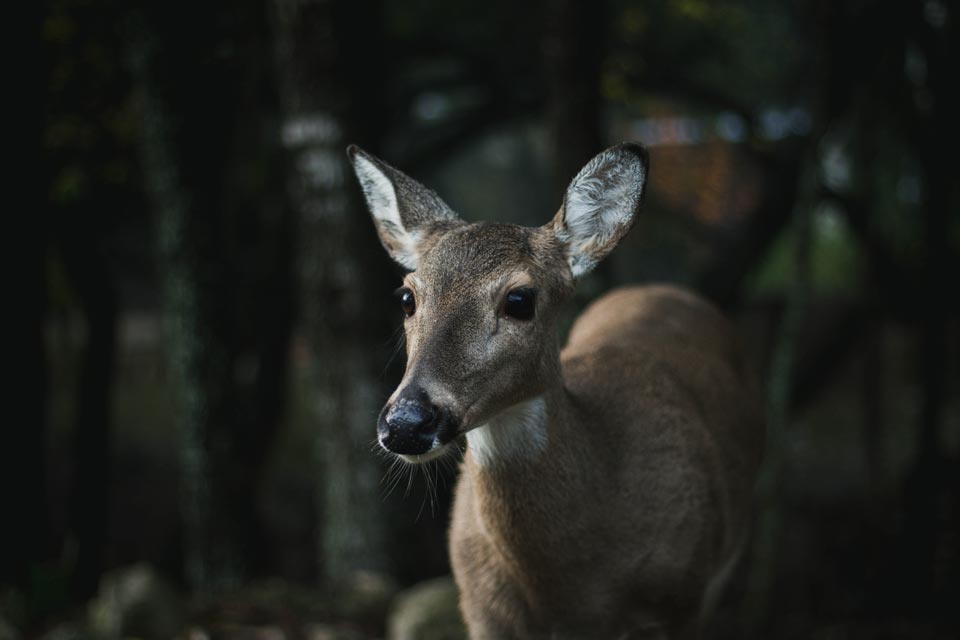You can see the collar around her neck that she received after her first capture. We know it is the same deer captured in the previous video because she was the first collared deer in the area. She definitely knows there is food to be found. Watch her nibbling the corn that we use to attract deer to the trap entrance.
In a recent post, I showed you what happens when the Clover trap door closes on a deer. Now watch the same deer visit another Clover trap!
Now watch as she enters the trap. Notice how she keeps her hind legs outside the trap as long as possible and leans forward to eat the corn? And then watch carefully as she sniffs the trigger mechanism and trip-wire and quickly backs out of the trap.
We rarely capture collared deer a second time in our traps. Sometimes they walk into our drop nets or rocket nets a second time, but rarely do we get a recapture in a Clover trap.
Some animals, especially hares and rabbits tend to become “trap-happy” and repeatedly get caught because they learn that there is food in the trap. However, deer, and especially bear, tend to be what we call “trap-shy” because you can catch them once but to capture them a second time (using the same method) is much less likely.
But trap shyness isn’t all bad! We actually prefer trap-shy deer because we’d rather not catch them a second time.
-Duane Diefenbach
Sign up to get email notices of the latest posts!
Acknowledgment – Thanks to Dave Mitchell of the Southeast Region, PA Game Commission for sharing these videos.
If you would like to receive email alerts of new blog posts, subscribe here.
And Follow us on Twitter @WTDresearch
